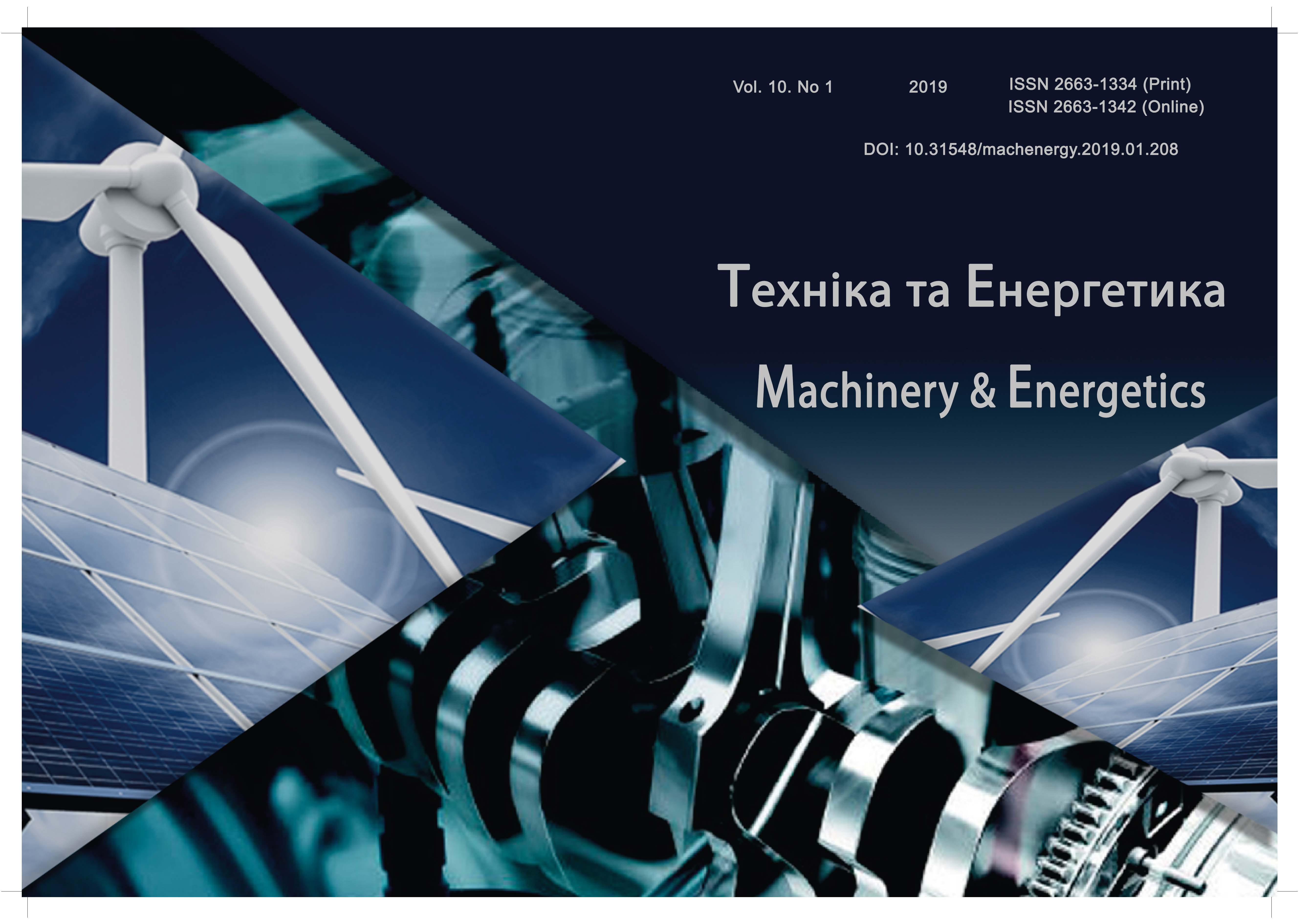Model of organizational-economic appli-cation mechanism resource savings in animal breeding
DOI:
https://doi.org/10.31548/machenergy2019.01.097Keywords:
animal husbandry, resource conserva-tion, technology, organizational and economic mechanism, model.Abstract
Further intensification of agricultural pro-duction should not occur due to extensive and intensive re-source-intensive methods of production, but through the efficient use and preservation of existing production re-sources. Therefore, the strategic direction of effective do-mestic livestock breeding is resource conservation, which should become the basis of the strategy and tactics of the economic activity of a modern agricultural enterprise and state policy. This will satisfy the growing needs of con-sumption and use of livestock products, implement tech-nical and technological re-equipment of the industry, main-tain the existing natural potential of Ukraine and revive its economy. In combination with other agricultural innova-tions, resource-saving livestock breeding is the basis for
the development of sustainable highly efficient agricultural production. A generalized characteristic of enterprises was developed according to the potential use of resource-saving technologies, the conditions for the application of modern technologies in animal husbandry at the level of an agricul-tural enterprise were determined, the study of which allows one to correctly evaluate the results of work, identify and use the reserves of growth, the economic potential of the enterprise, increase the efficiency of agricultural produc-tion and offer a model of organizational economic mecha-nism of resource use saving technologies and its effective functioning.
References
Boltyanska N. I. (2008). The current state of the machine-tractor fleet of enterprises in the agro-industrial complex. Proceedings of the Tavrida State Agrotechnological University. No 36. 3-7.
Sklar O. G., Boltyanska N. I. (2012). Mechanization of technological processes in animal husbandry: textbook. manual. Color Print. 720 s.
Mozhaev E. E. (2005). The role of science in the innovative processes of agriculture and industrial training. Mechanization and electrification of agriculture. No 6. 2-4.
Boltyanskiy O. V., Boltyanska N. I. (2016). Concerning the assessment of potential use of resource-saving technologies in dairy cattle-breeding enterprises TDATU Scientific Bulletin. Issue 6. T. 1. 50-55.
Boltyanskaya N. I. (2016). Analysis of the main areas of resource conservation in animal husbandry. Motrol: Motoryzacja i Energetyka Rolnictwa. Vol. 18. No 13, 49-54.
Sklar O. G., Boltyanska N. I. (2018). Fundamentals of Livestock Enterprise Design: A Textbook. Condor Publishing House, 380.
https://doi.org/10.4324/9781315576619-24
Gracheva L. I. (2008). Improving the efficiency of using non-traditional energy sources in the country's livestock sector. Lugansk: Elton, 652.
Boltyanska N. I. (2018). Ensuring the highly efficient operation of the livestock production process by enhancing the reliability of the machinery. Scientific Bulletin of NULES of Ukraine. APK Engineering and Energy series. Issue 282, Part 1. 181-192.
Energy saving strategy of Ukraine: (2006). Analytical and reference materials in 2 volumes: General principles of energy saving. K: Academic Period, T. 1. 510.
Boltyanska N. I. (2016). A system of factors for the effective use of resource-saving technologies in dairy cattle breeding at the enterprise. TDATU Scientific Bulletin. Issue 6. T. 1. 55-64.
Nechaev, V. (2009). Development of directions for the innovative development of animal husbandry. Agricultural Economics of Russia. Number 12. 38-48.
Boltyanskiy O. V., Boltyanska N. I. (2014). Analysis of ways to increase the efficiency of the use of a machine tractor park. Against TDAT. No 14. Vol. 4. 204-209.
Boltyanska N. I. (2016). Indicators for assessing the effectiveness of resource-saving technologies in livestock. Bulletin of Sumy NAU SERIES "Mechanization and automation of production processes". No 10/3 (31). 118-121.
Kozhamuratov, N. Zh. (2009). Efficiency of production and reduction of labor costs in animal husbandry. Agricultural science. No 11. 20-22.
Boltyansky O. V., Boltyanskaya N. I. (2015). Environmental safety of production and reduction of material and energy resources consumption for agricultural production. NULES Scientific Bulletin. APK Engineering and Energy series. Ex.212, Part 1. 275-283.
Kartashov L. P. (2007). Methods for calculating the biological and technical parameters of a human - machine - animal system: a training manual. Orenburg: Publishing house Center OGAU, 152.
Boltyanskiy O. V., Boltyanska N. I. (2015). Reducing the cost of energy resources for agricultural production. Collection of abstracts of the II International Scientific and Technical Conference "Kramar Readings" of NULES. 54-55.
Boltyanska N. I. (2016). Conditions for the effective use of resource-saving technologies in dairy cattle. Against TDAT. No. 16. T.2. 153-159.
Karol C. Instalacja zgazowujaca osuszony osad sciekowy. Motrol: Motoryzacja i Energetyka Rolnictwa, 2011.Vol. 13, А. 80-93.
Downloads
Published
Issue
Section
License
Relationship between right holders and users shall be governed by the terms of the license Creative Commons Attribution – non-commercial – Distribution On Same Conditions 4.0 international (CC BY-NC-SA 4.0):https://creativecommons.org/licenses/by-nc-sa/4.0/deed.uk
Authors who publish with this journal agree to the following terms:
- Authors retain copyright and grant the journal right of first publication with the work simultaneously licensed under a Creative Commons Attribution License that allows others to share the work with an acknowledgement of the work's authorship and initial publication in this journal.
- Authors are able to enter into separate, additional contractual arrangements for the non-exclusive distribution of the journal's published version of the work (e.g., post it to an institutional repository or publish it in a book), with an acknowledgement of its initial publication in this journal.
- Authors are permitted and encouraged to post their work online (e.g., in institutional repositories or on their website) prior to and during the submission process, as it can lead to productive exchanges, as well as earlier and greater citation of published work (See The Effect of Open Access).

